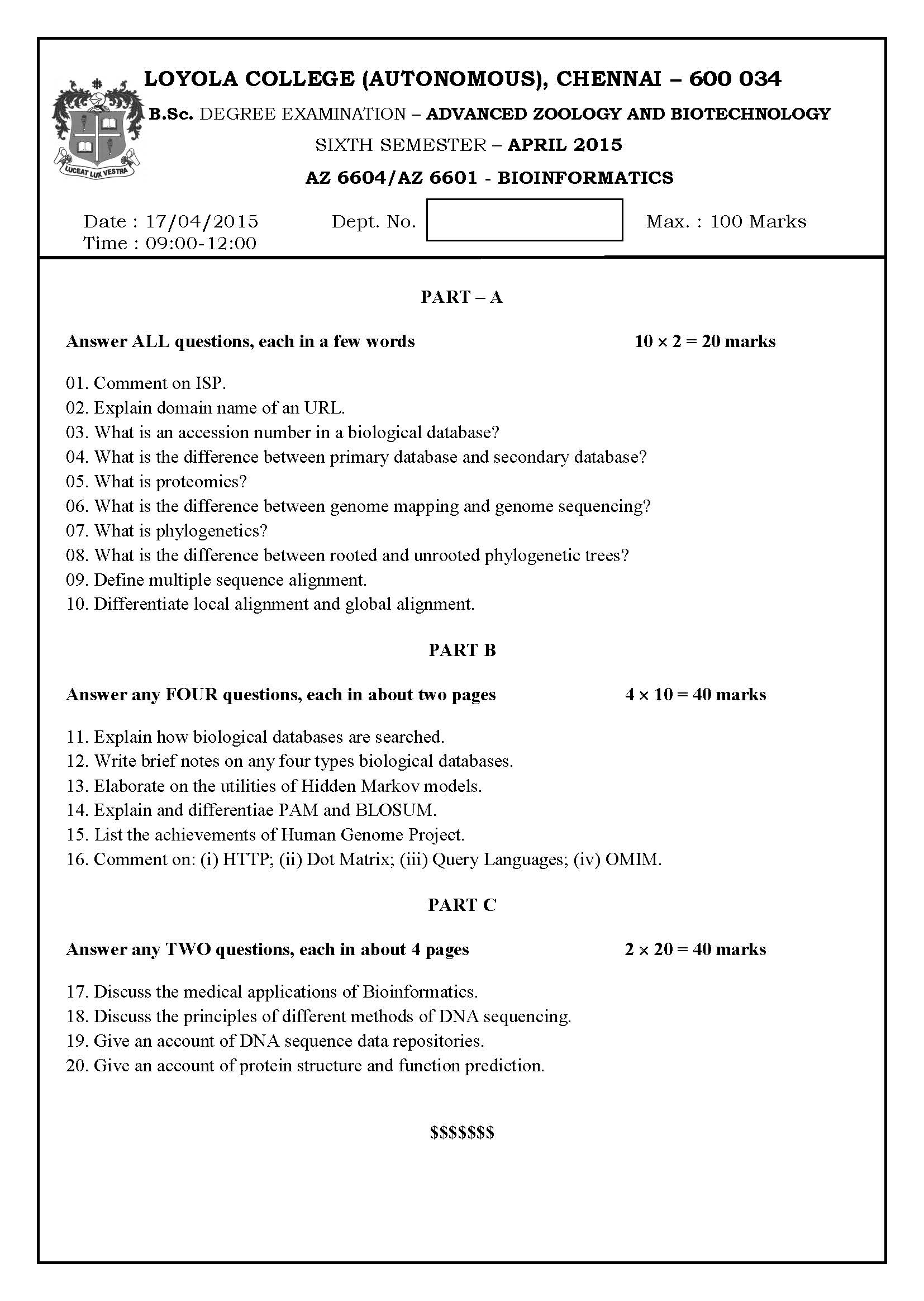LOYOLA COLLEGE (AUTONOMOUS), CHENNAI-600 034.
M.Sc. DEGREE EXAMINATION – ZOOLOGY
fourth SEMESTER – APRIL 2003
ZO 4804 / Z 1021 bioinformatics
29.04.2003
1.00 – 4.00 Max: 100 Marks
SECTION – A (10 ´2 = 20 Marks)
Answer all the questions
- Comment on pairwise alignment.
- Differentiate ONLINE and OFFLINE information.
- Expand FTML under FTP.
- What is accession number?
- Give the codes for the following sites:
(a) Commercial (b) Government (c) Education (d) Military
- Comment on “Medline”.
- What you meant by “Heuristic”.
- Define Biochips
- What you mean by VSNL?
- Comment on metal protein.
Section – B (4 ´ 10 = 40 Marks)
Answer any four questions
- Describe the role of E-mail in information Technology.
- Write an account on CD-
- Briefly describe the nature and role of ‘information’.
- Discus the role of operating system in the computer applications.
- Describe ‘nucleus ultra structural information with computational approach’.
- Briefly explain the construction of phylogenetic tree.
SECTION – C (2 ´ 20 = 40 Marks)
Answer any two questions
- Discuss the dynamic programming in sequence alignment.
- Describe the salient features of the Database in the biological researches
- Discuss the human genome project in the context bioinformatics.
- Discuss the process of predicting the redox state of cysteines in proteins from multiples sequence alignment.




